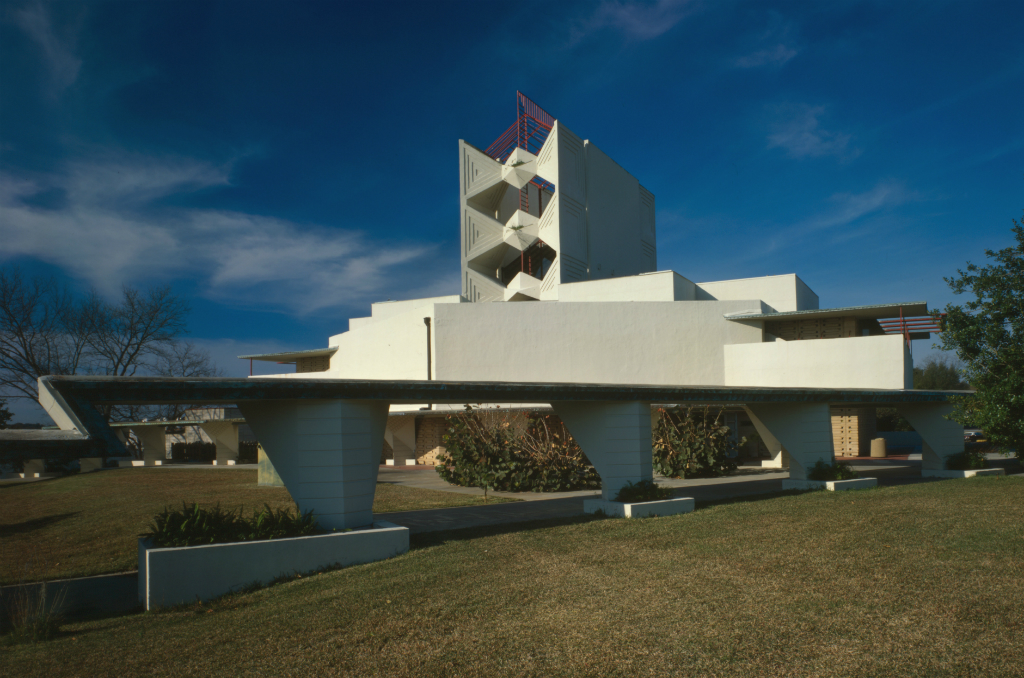“Grow out of the ground and into the light, a child of the sun.”
Those were the words pioneer architect Frank Lloyd Wright used to describe the buildings he would create to transform Florida Southern College’s campus.
Dr. Ludd M. Spivey, the college’s president at the time, contacted Wright in an effort to modernize the oldest four-year private college in the Sunshine State.
Wright designed 18 structures that would embrace his philosophy of organic architecture.
“When you go into a Frank Lloyd Wright building, at the entrance, the ceilings are lowered,” Mark Tlachac, former director of the Frank Lloyd Wright Visitors Center, told Fox 13 News. “He wants you to feel compressed. When you move in, the ceilings soar. That’s the release. Compression to release.”
Construction on the Annie Pfeiffer Chapel, which has been fully restored, began in 1938 and was the first of the 12 structures that came to fruition during his lifetime.
Other works sprawled across the 100-acre lakeside orange grove included a fountain called the “Water Dome” and walkways known as the “Esplanades.”
Most of the structures were built by students, who Florida Southern College offered free education to during the Great Depression if they helped with construction. The student’s crafted Wright’s patented “textile blocks” out of local materials, which simplified design and construction.
The most recent structure constructed on the school grounds was the “Usonian,” which was built in 2013. The project used Wright’s textbook textile blocks, which posed a problem for the construction team trying to execute the architect’s 1939 design.
“Nobody builds these. You can’t go to The Home Depot and buy textile blocks,” Florida Southern College docent Paul Waterman told the Herald Tribune. “There is 10,000 linear feet of cypress wood, which is hard to get.”
But the hard work was worth it. Tlachac raved about Wright’s Usonian design in a video produced for Polk County government.
“When the sun shines, it is like little jewels coming into the building,” he said.
Wright adopted the word Usonian to describe his vision for the landscape of the United States.
“Wright’s concept for creating a uniquely American architecture has as a central premise that our buildings should be tied to our unique natural environment and not rooted to European precedent,” Sarasota architect Greg Hall told the Herald Tribune. “This continues to have a great influence on architects.
He built approximately 60 of these Usonian houses that aimed to deliver high-design standards to middle-class families.
According to Waterman, “Wright believed architecture for the middle-class was lacking in the U.S.”
The 1,700-square-foot Usonian at Florida Southern College is located next to the Sharp Family Tourism and Education Center, which is the first stop for those wishing to tour the campus.
Voted “The Most Beautiful Campus in the Nation” by the Princeton Review, visitors can take tours ranging from an hour to two-and-half hours.
“Like any great piece of architecture, it really needs to be experienced,” architect Jeff Baker, who supervised construction, told The Ledger. “Models and photographs don’t really capture the feel of it. Even for me – I have been watching this house go up all this time, and I was even really shocked when I came in at its beauty.”
In 2012, the Florida Southern College Historic District was designated a National Historic Landmark by the National Park Service.

William is the Managing Editor at FloridaInsider.com. His years of experience in journalism, broadcasting and multimedia include roles as a Writer and Web Producer. He graduated from Florida International University with a Bachelor of Science and Communication.

